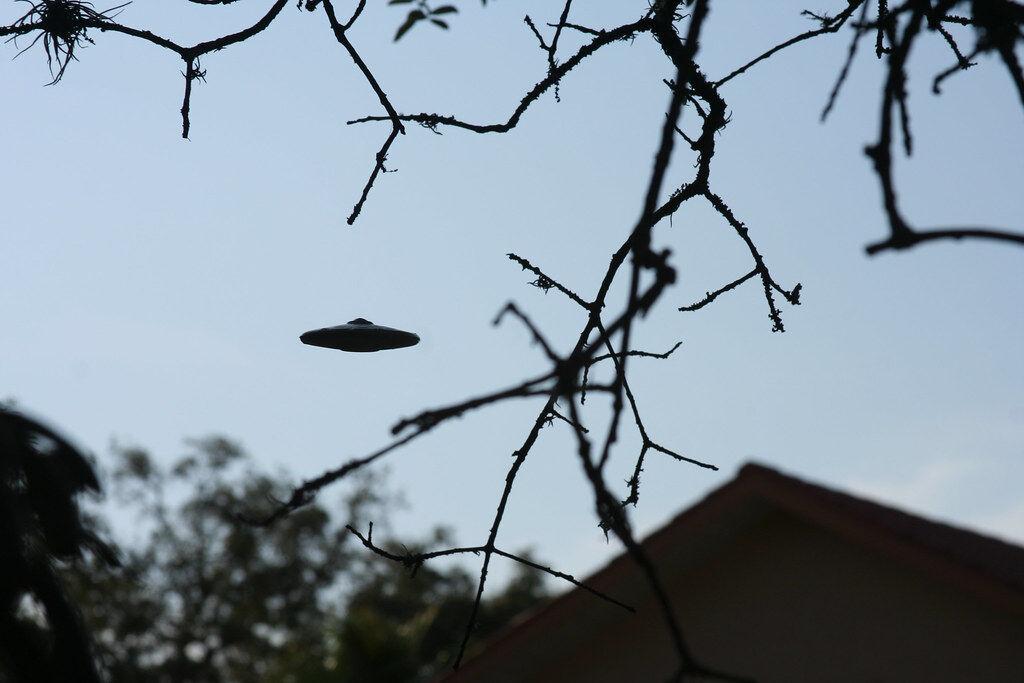Over 140 anomalies documented by the military were found to be inconclusive, according to the long-anticipated “UFO report,” yet the research has only just begun.
The preliminary assessment of “Unidentified Aerial Phenomena,” or UAP, was released on June 25 by the nation’s top intelligence official. It comes after rare bipartisan support in the Senate led to the creation of the Department of Defense Unidentified Aerial Phenomena Task Force, or UAPTF, which prepared the assessment.
Nick Suntzeff, an observational astronomer and professor at Texas A&M, weighed in on the findings of the report and the need for further professional, publicly-funded study of UAP.
“As I expected, there’s not much new information [in the report],” Suntzeff said. “But this is the beginning of a sea change in the subject. I bet the studies will be inconclusive, but given the huge public interest, it is time to address the subject in a serious way.”
The UAPTF evaluated 144 incidents between 2004 and 2021, according to the report. The majority of reports of UAP came in the past two years, as reporting mechanisms improved and became better known to the military aviation community.
UAP were placed into five explanatory categories — airborne clutter, natural atmospheric phenomena, U.S. industry developments, foreign adversary systems and a catchall “other” bin.
“In a limited number of incidents [categorized as “other”], UAP reportedly appeared to exhibit unusual flight characteristics,” the report reads.
In 18 incidents, described in 21 accounts, some UAP appeared to remain stationary in winds aloft, move against the wind, maneuver abruptly or move at considerable speed without discernible means of propulsion. In 11 instances, pilots described near misses with a UAP.
“These observations could be the result of sensor errors, spoofing or observer misperception and require additional rigorous analysis,” the report reads. “We are conducting further analysis to determine if breakthrough technologies were demonstrated.”
The most common hurdle in trying to identify UAP was data being inconsistent and limited data in existing records. Military sensors are typically designed to fulfill specific missions, so they are generally not suited for identifying UAP, according to the report.
“For instance,” Suntzeff said, “Metabunk [“debunking” website] has a calculation showing that the Go Fast event is at about 13,000 feet, about six feet across and traveling at moderate speeds which could be consistent with an albatross [seabird].”
Yet most UAP observed probably do represent physical objects, the UAPTF concluded. A majority of UAP were registered across multiple sensors, including radar, infrared, electro-optical, weapon seekers and visual observation.
“We were able to identify one reported UAP with high confidence,” the UAPTF said. “In that case, we identified the object as a large, deflating balloon. The others remain unexplained.”
The UAPTF said it regularly heard anecdotes about other encounters, but which were never captured in formal or informal accounts by the observers. This may be in large part due to the surrounding “sociocultural stigmas,” according to the report.
“Narratives from aviators and analysts describe disparagement associated with observing UAP, reporting it, or attempting to discuss it with colleagues,” the report reads.
The majority of UAP data is from the U.S. Navy, but efforts are underway to standardize incident reporting across all government services and agencies. The UAPTF said this standardization marks the beginning of government investment in new processes, policies, technologies and training that will be necessary to understand UAP.
Going forward, the UAPTF said it is looking to establish a “baseline” for UAP activity. To combat collection bias, this effort will start at the Federal Aviation Association, or FAA. The FAA monitors for anomalies and maintains reports from pilots during the normal course of managing air traffic.
“In the past, there was never any good data on the three dimensional motion of the events, except by the FAA at airports. But their data is not solid,” Suntzeff said. “I hope that some engineers take this data and try to figure out if the motions are consistent with normal objects and not some speculative ‘new physics.’”
In the scientific community, the search for intelligent life is already an active field of study but hindered by limited public funding, Suntzeff said in an interview with Texas A&M Today.
“This subject is now real enough that Congress needs to fund NASA to study these events,” Suntzeff said.
UFO Report signals ‘sea change’ in US government
July 6, 2021
Photo by Creative Commons
The most recent UFO report from the Department of Defense delivered a series of inconclusive results over the course of nine pages.
0
Donate to The Battalion
$2065
$5000
Contributed
Our Goal
Your donation will support the student journalists of Texas A&M University - College Station. Your contribution will allow us to purchase equipment and cover our annual website hosting costs, in addition to paying freelance staffers for their work, travel costs for coverage and more!
More to Discover










